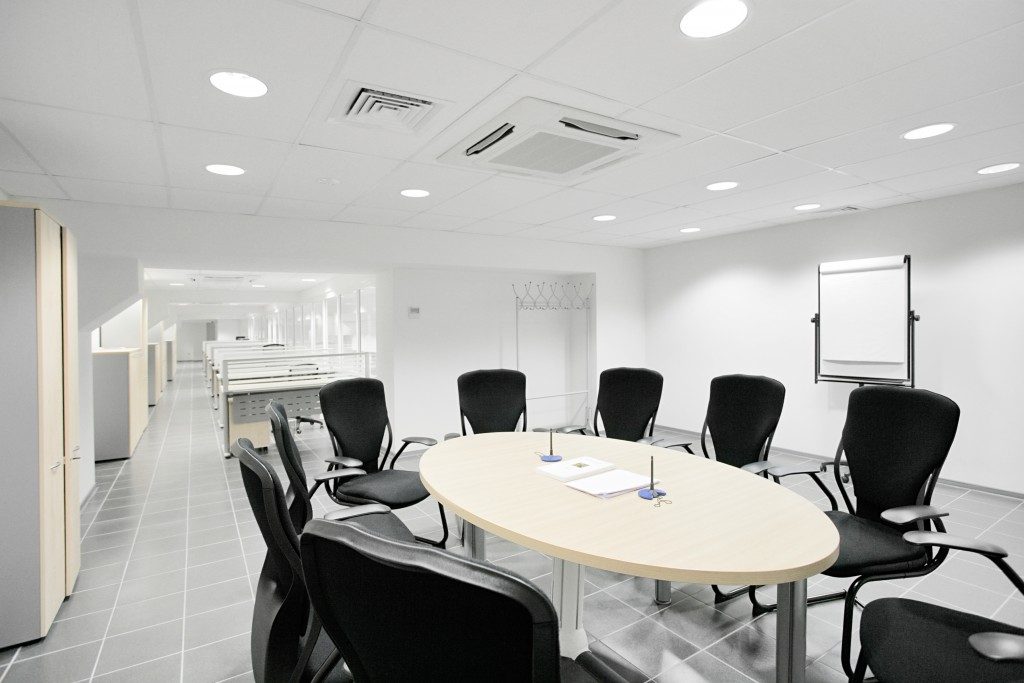Expert opinion matters when talk comes around to designing commercial HVAC units for any Utah office. A building project must always include extensive and informed planning on every component —that is, Heating, Ventilation, Air-Conditioning, and a fourth element governing all, Controls.
At the core of modern office design
Interior temperature regulation is essential to office design. HVAC systems determine not only the temperature with which building occupants will be working it. They also determine air quality. The importance of these elements to health, well-being and productivity cannot be stressed enough. Let us start the discussion with an overview of the three disciplines of heating, ventilation and control.
HVAC redefined
Heating may be provided to occupants directly by radiation through ceiling, wall, or panels systems. The alternative is to heat the air people occupy. Meanwhile, ventilation systems remove contaminants to ensure clean air for breathing and maintain an ideal mixture of gases. Ventilating may be provided by passive or active systems. Air-conditioning has to facets—control of air temperature and air humidity. The coolness of the air must be complemented by the degree of humidity. The local climate largely determines the need for humidification/dehumidification. Controls encompass all three elements described above. Ideally, modern control systems must be safe, effective, and energy efficient. Control systems should allow for reliable and proper operation of HVAC systems in an office setup.
Energy efficiency is a priority
 Modern office spaces utilize energy. A huge percentage of this energy consumption goes to HVAC operations and maintenance. As such, it is imperative for prevailing HVAC systems to be efficient. Efficiency must be achieved as the system aims to respond to current loads adequately while saving on energy costs. Because of its huge impact on overall energy usage, your HVAC system must be designed for maximum efficiency.
Modern office spaces utilize energy. A huge percentage of this energy consumption goes to HVAC operations and maintenance. As such, it is imperative for prevailing HVAC systems to be efficient. Efficiency must be achieved as the system aims to respond to current loads adequately while saving on energy costs. Because of its huge impact on overall energy usage, your HVAC system must be designed for maximum efficiency.
Strategizing to deal with increasing heat load
In a warming world, the heat gain of a building is a primary consideration in choosing heating, ventilating, and air conditioning systems. An assessment of sunlight, humidity, temperature, wind paths and speed is an essential first step in determining the temperature and humidity needs of an office space. Work activities, heat dissipation and heat loss, are additional factors to consider. You might end up cooling more than you need or providing a workplace that is uncomfortably humid by neglecting all these factors and how they interact. Zoning has emerged as a smart strategy to address the unique needs of work areas while conserving on energy and resources. To meet the different requirements of your office space, you must consult extensively with experts on the subject.
There is nothing trivial in choosing the HVAC system that will make your workplace a healthy and productive haven for the organization. So many factors are in play. The structure and design of a building as well as its intended use determines the design of the heating/cooling and ventilating systems to be installed. Outside elements such as the amount of heat from the sun, wind, humidity, and prevailing temperature factor in the type of system that best suits the needs of the occupants.

